 In 1903 David Buick was needed to raise more money for his car company via a $5,000 loan from a friend and fellow car enthusiast, Benjamin Briscoe. In return for the finance, Briscoe gained a 97% interest in the Buick Motor Company. Briscoe sold the Buick Motor Car Company in 1904 to Flint Wagon Works and used the money to found the Maxwell-Briscoe Motor Company, makers of the Maxwell automobile.
In 1903 David Buick was needed to raise more money for his car company via a $5,000 loan from a friend and fellow car enthusiast, Benjamin Briscoe. In return for the finance, Briscoe gained a 97% interest in the Buick Motor Company. Briscoe sold the Buick Motor Car Company in 1904 to Flint Wagon Works and used the money to found the Maxwell-Briscoe Motor Company, makers of the Maxwell automobile.
Maxwell-Briscoe Company manufactured the Maxwell automobile from 1904 to 1925. The company was named after founders Jonathan Dixon Maxwell and Benjamin Briscoe, who was president of Maxwell-Briscoe.
Jonathan Dixon Maxwell (1864-1928) was a machinist by trade and worked at the Olds Motor Works and helped build and test some of their early cars. In 1904, after a year of development, Maxwell went into business with Briscoe to build a new runabout of Maxwell’s design.
Benjamin Briscoe (May 1867–26 June 1945) was born in Detroit, Michigan, and was an automobile pioneer and industrialist. Briscoe entered business for himself at age of 18 organizing the firm of Benjamin Briscoe & Co. to manufacture sheet-metal stampings. This later became part of the American Can Company. He then invented a machine for the production of corrugated pipe for the Briscoe and Detroit Galvanizing Works, later the Briscoe Manufacturing Company.
By 1909, Maxwell-Briscoe was the 3rd largest carmaker in the country with 9,400 sales, Maxwell had 19 patents and the company was building a new factory in New Castle, Indiana.
Briscoe conceived the idea of consolidating the four largest automobile manufacturers into one company. His negotiations with Durant, Ford, and Olds failed, so he proceeded to organize his own corporation along the broad lines he envisaged resulting in the United States Motor Company.
The United States Motor Company was organized in 1910 as a selling company, to represent various manufacturers. It began as the International Motor Company in 1908 in an attempt to create the first major consolidation within the industry with Maxwell-Briscoe and Buick, which did not succeed. International Motor was renamed United States Motor Company in December 1909. This was an effort to try to save several independent automotive manufacturing companies who were having great difficulty in getting the necessary financial backing. Those companies included Alden-Sampson Manufacturing Company, Brush Runabout Company, Columbia Motor Car Company, Dayton Motor Car Company and Maxwell-Briscoe Motor Company.
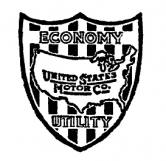
1910 production announced in mid-year included 15,000 Maxwells, 10,000 Brush Runabouts, and 10,000 of the Stoddard-Dayton, Columbia, and Alden Sampson Trucks. Later in 1910, Briscoe formed United Motors International, Ltd. to handle international sales of the United States Motor Company, focused mainly on England.
Announcing some price reductions for 1911 models, the company stated that it had 18 plants with combined floorspace of 49 acres with 14,000 employees capable of producing 52,000 vehicles. There were 52 models offered in 1911. It was claimed that there was no left over stock of unsold cars from the 1910 model year and that business was up fifty-seven percent from the year earlier period.
Briscoe several times complained that the dislike of bankers to the automobile industry was hampering growth. In 1912, the company went into receivership. The bankers attributed the failure to bad management. In late 1912 Briscoe was forced out and replaced by Walter Flanders as manager for the receivers committee. In 1913, he reorganized the company as the Maxwell Motor Company, Inc. and moved to Highland Park, Michigan.
Walter E. Flanders (March 4, 1871 – June 18, 1923) was Ford Motor Company’s production manager. Flanders left Ford in 1908 to co-found the E-M-F Company, which was acquired by Studebaker in 1910. E-M-F was an manufacturer that produced automobiles from 1909 to 1912. (Click to view 1912 E-M-F Model). The name E-M-F was gleaned from the initials of the three company founders: Barney Everitt, William Metzger (formerly of Cadillac), and Walter Flanders. Flanders died in Newport News, Virginia on June 18, 1923 as the result of complications following a car accident in which he’d been involved three days earlier. He was inducted into the Automotive Hall of Fame in 1994.
The assets of the United States Motor Company and constituent companies were sold for $7,080,000 at a public foreclosure sale in January 1913.
In 1925, Walter Chrysler formed the Chrysler Corporation. That same year, the Maxwell line was phased out and the Maxwell company assets were absorbed by Chrysler.
Briscoe Motors Corporation

A few months after his departure from the United States Motor Company in 1913, Briscoe established Briscoe Freres, a manufacturing plant in Billancourt, France to design and manufacture the first automobile in France built by American methods, The Ajax was the result and built between 1913 and 1919. It was a 12hp cyclecar with 980 cc 4-cylinder engine with friction drive. It sold for ₤78. Production there was cut short when his factory was used for shell manufacturing during World War I.
In 1914, production continued after the Briscoe returned to the United States and built the Argo car, which was similar to the Ajax. The company made its debut near its corporate office at the New York Automobile Show in January 1914. The 1914 and 1915 Briscoe automobiles had a four-cylinder engine and a lightweight body made of a compostion papier-mache material. Their most unusual feature was a single “cyclops” headlight set in the radiator shell, but this was soon abandoned because it was illegal in a number of states. The seating arrangement in the 1915 Briscoe Roadster utilized a “cloverleaf” arrangement making it possible to carry three passengers.
In 1915, Briscoe offered what he called “The First French Car at an American Price.” Briscoe claimed that the car had been designed by a French design studio. It featured a single headlamp in the front, faired into the radiator shell. The auto was priced at US$750.00 but this price did not include a top, windshield, or starter. The company also produced the Argo, the Hackett, and the Lorraine.
Briscoe automobiles sales figures increased each year of production until 1920. By late 1921, Briscoe decided to retire.
Briscoe Motors Corporation was based in New York City on Broadway and 59th Street. The manufacturing plant was located in Jackson, Michigan and made between 1914 and 1921. The marque was discontinued in 1923.
After the war, Briscoe and a group of others developed a new process for refining crude oil. He then went to Montreal, Quebec, Canada, as an executive in an oil company later taken over by the Texas Company (Texaco). Later he was involved in gold mining in Colorado. About 1940 he retired to a 3,000-acre plantation in Marion County, Florida, where he experimented in growing tung trees. Briscoe died in 1928 at age 78 in his home near Dunnellon, Florida.
Advertisements

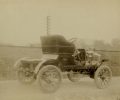
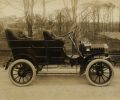
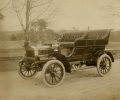
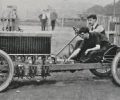
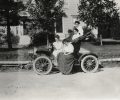
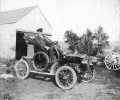
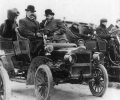
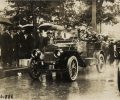
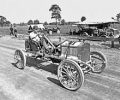
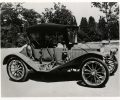
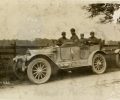
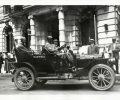
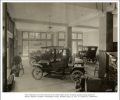
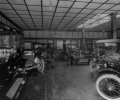
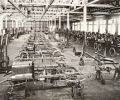
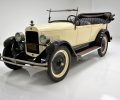
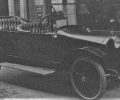
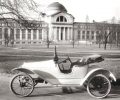
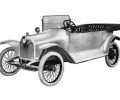
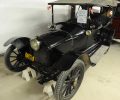
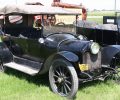
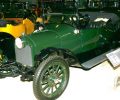
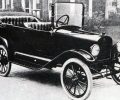
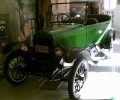
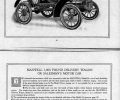
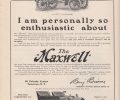
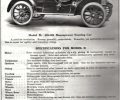

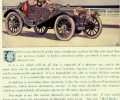
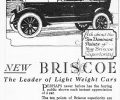
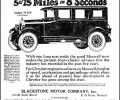
You must be logged in to post a comment.